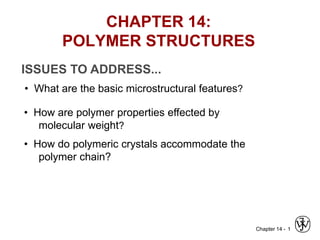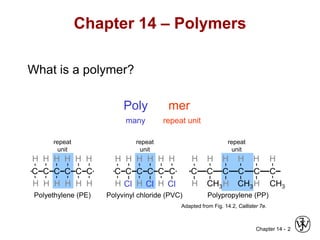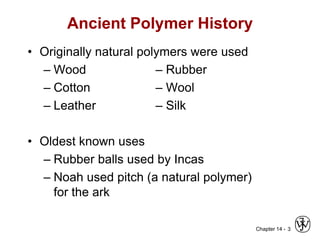This document provides an overview of polymer structures and properties. It begins by defining a polymer as a large molecule composed of repeating structural units called monomers. Examples of common polymers like polyethylene, polyvinyl chloride, and polypropylene are given. The document then discusses polymer composition, molecular weight, crystallinity, mechanical properties, and common processing techniques. In particular, it notes that polymer properties are affected by molecular weight, crystallinity, temperature, and time-dependent deformation. Common techniques for processing thermoplastics and thermosets are also outlined.































